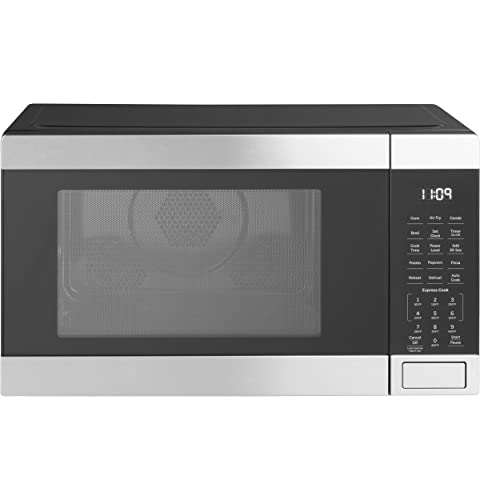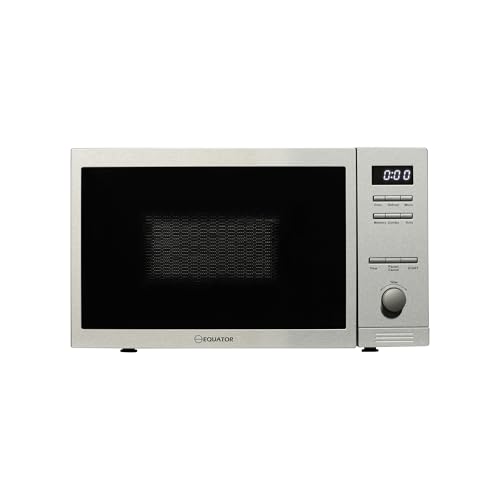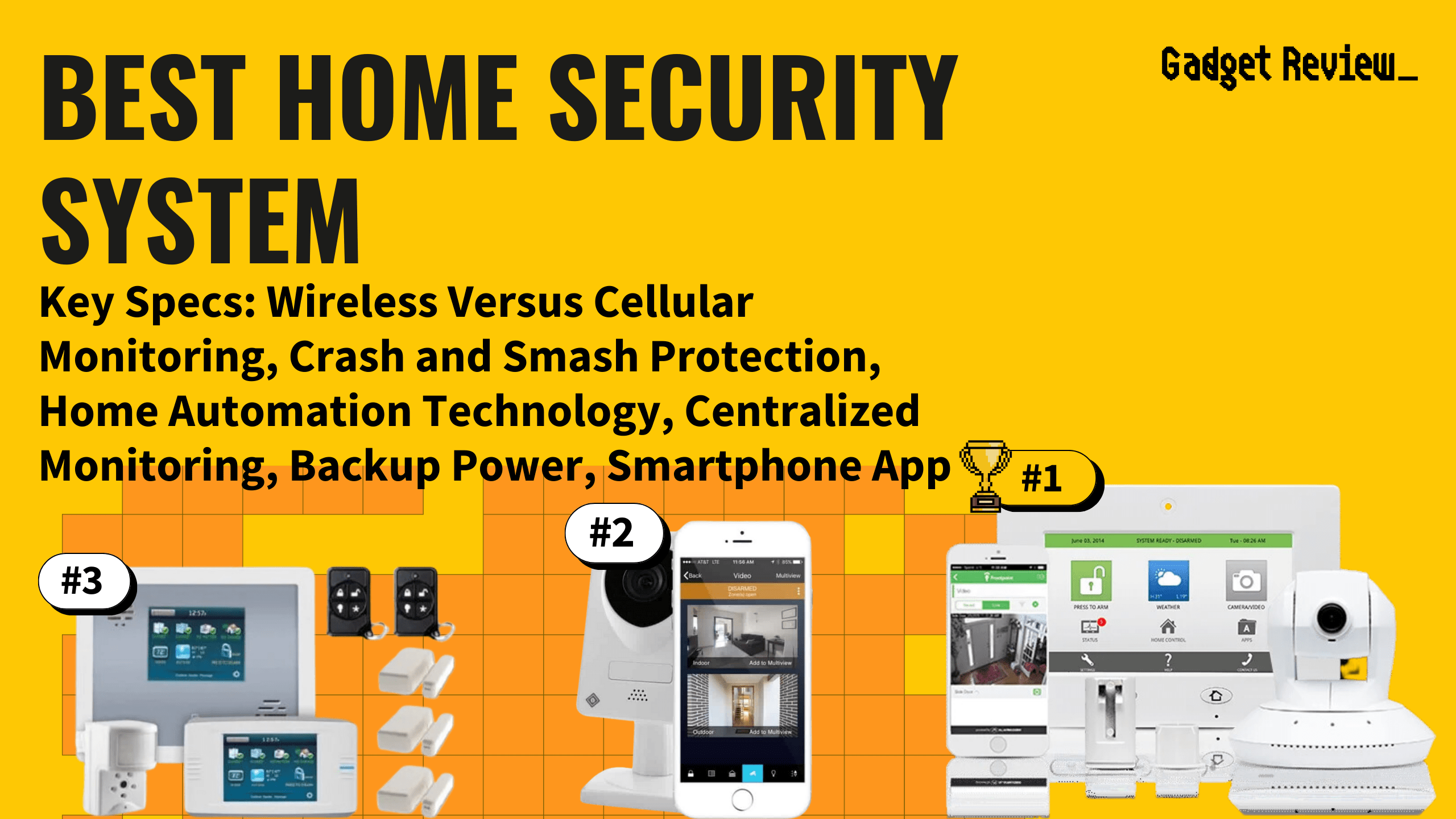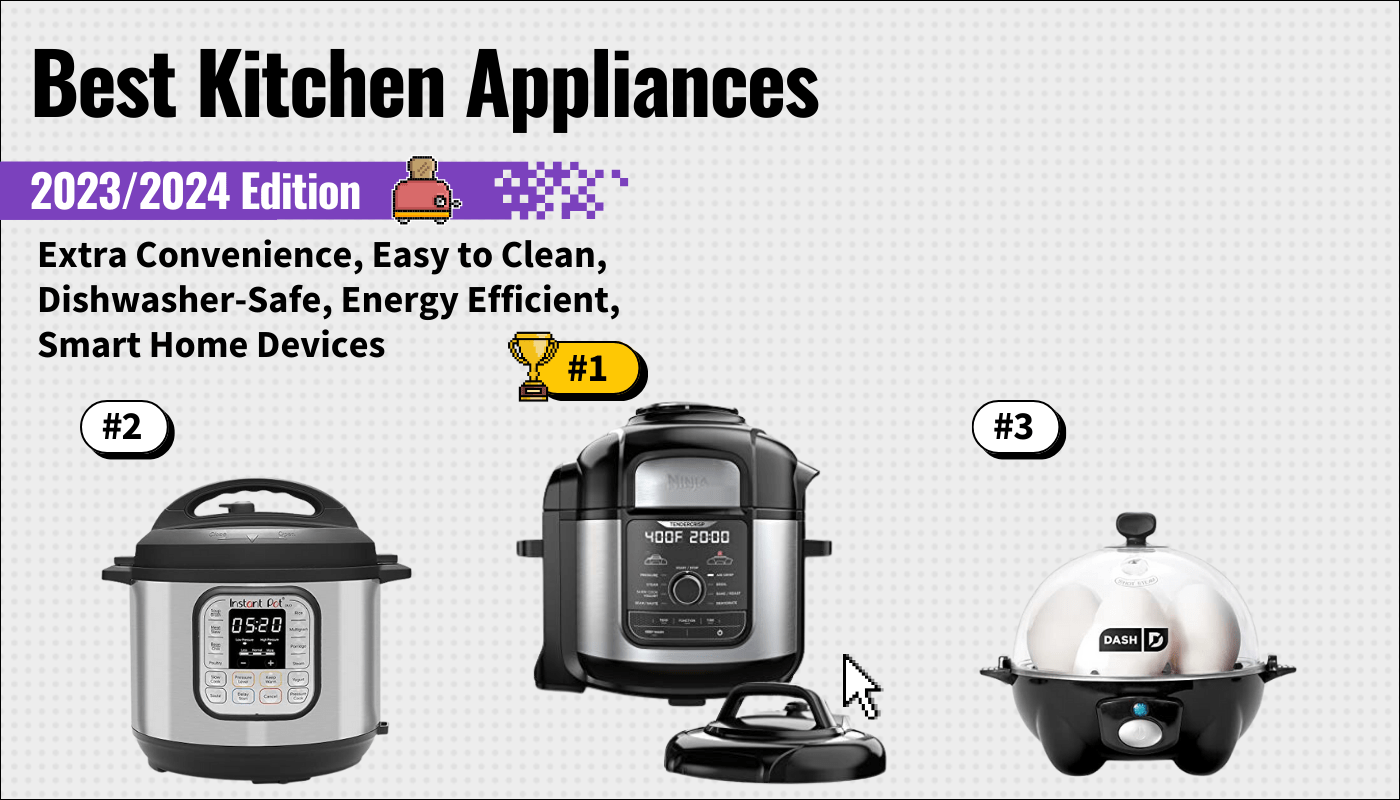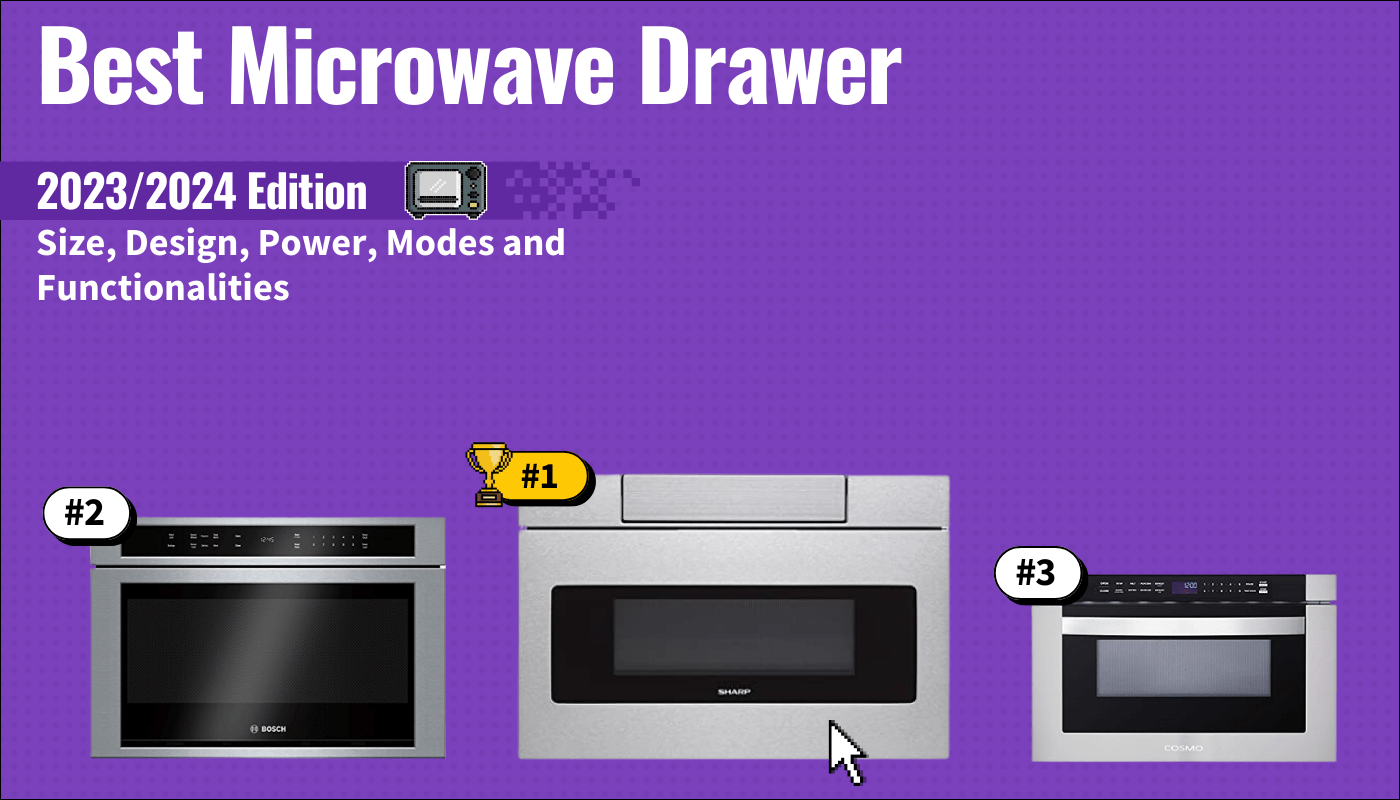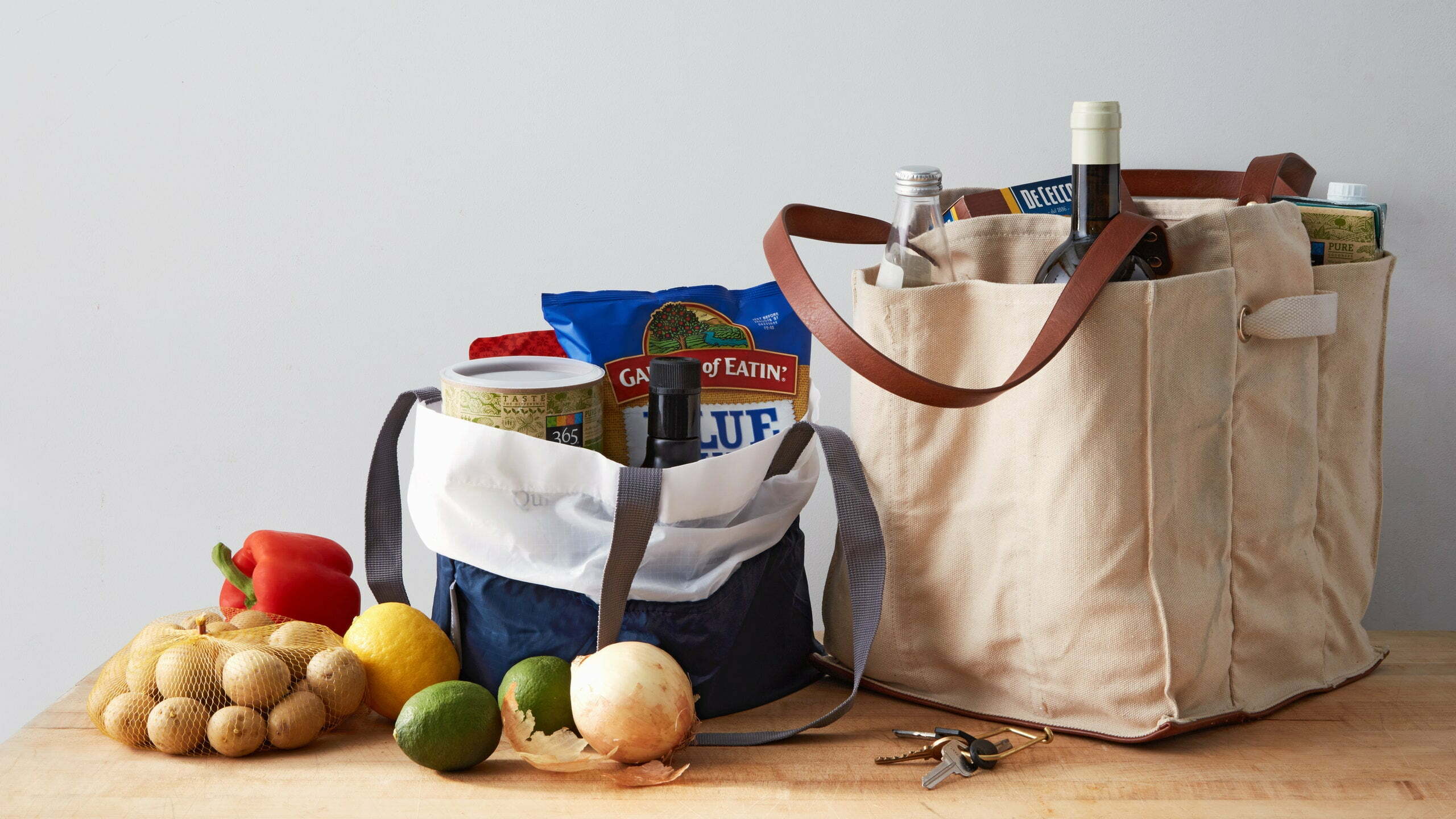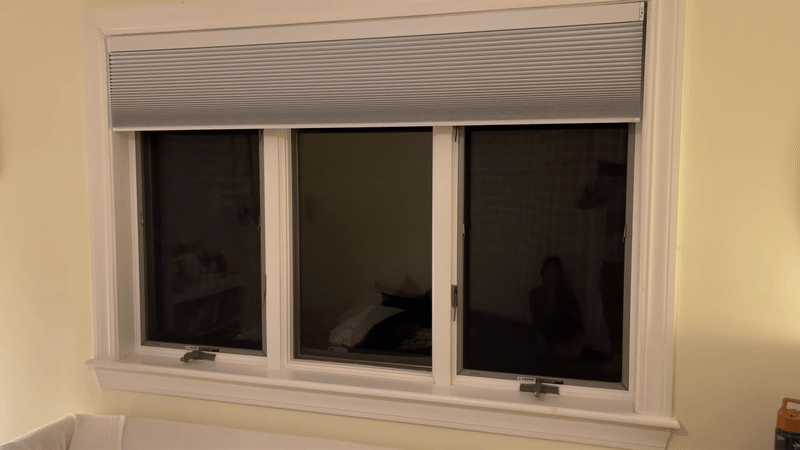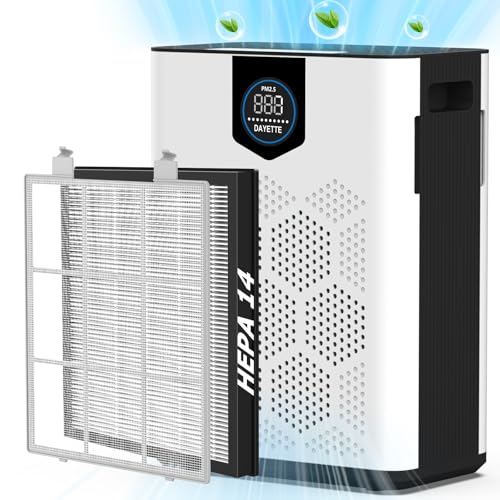If you’re shopping for the best convection microwave ovens, there’s a good chance that you’re in the market for a more robust microwave that can do more than reheat last night’s dinner. So, you’re going to want to prioritize key specs like higher power in the 1,000-watt or better range and a control panel with enhanced functionality. Convection microwave ovens can often replace traditional microwaves thanks to features like air frying, crisping, and even grilling. But don’t forget that the internal capacity will dictate what dishes or plates your microwave can accommodate. If you’re after an appliance that can handle even more varieties of food, consider a microwave and toaster oven combo to save time preparing food.
After researching through thousands of reviews, and a plethora of convection microwave ovens, we nominated the Black & Decker EM720CB7 Digital Convection Microwave Oven as our Top Pick. Keep reading to learn more about our research criteria and to review our recommendations for the best convection microwave oven as well as the best microwaves for any need.
Top 8 Convection Microwave Ovens
#1 Black & Decker EM720CB7 Digital Convection Microwave Oven
Award: TOP PICK
WHY WE LIKE IT: The best countertop convection microwave oven for budget shoppers that offers 700 watts with a compact 0.7 cubic feet of internal space.
- Best on a budget
- 700 watts and 0.7 cu. ft.
- Includes PowerGrill Duo and Sensor Cook
- Lacks fingerprint resistance
If you’re not a microwave chef aficionado but still want a convection microwave, we think the EM720CB7 from Black & Decker is smart. Especially for people who are casual microwave users, an oversized appliance doesn’t make sense. We think this is the best countertop convection microwave oven thanks to the compact 0.7-cubic feet of internal capacity. While the wattage is only 700, you’re still within the acceptable range to ensure consistent power and even heating. The external dimensions measure 17.3 inches wide, 13 inches deep, and 10.2 inches tall with a 10-inch diameter glass turntable.
The Black & Decker microwave comes in a sleek stainless steel finish that will look nice in most kitchens or even in an office break room. You’ll get a fairly standard touchpad control panel, and a streamlined set of features such as six auto-cook presets, express quick start cook buttons for fast cooking between one to six minutes, a defrost, and a memory feature. This microwave also comes with 10 power settings. It’s also a good option if you’re looking for the best microwaves for dorms.
#2 GE JES1109RRSS Countertop Convection Microwave Oven with Air Fry
Award: HONORABLE MENTION
WHY WE LIKE IT: The GE Countertop Convection Microwave with Air Fry brings versatility and power to your kitchen, combining convection, air fry, broil, and traditional microwave modes for quick, healthy meals and snacks.
- Multiple cooking modes (air fry, broil, convection)
- Compact yet powerful
- Comes with an air fry crisper pan
- Glossy control panel can reflect light
- Limited preset cooking options
With its 1.0 cubic foot capacity and 1050-watt power, the GE Convection Microwave is compact yet mighty, perfect for smaller spaces like dorms or offices. It combines four cooking modes—air fry, convection, broil, and microwave—for quick, convenient cooking without extra appliances crowding your countertop. The dedicated air fry mode and the included stainless crisper pan make it easy to create healthier versions of your favorite fried foods without the added oil. Plus, convection cooking ensures even heat distribution for golden-brown results every time.
The microwave also includes thoughtful touches like a glass turntable for even cooking and a sleek, easy-to-clean stainless steel interior. While the control panel can be challenging to read under direct light due to its gloss, the overall design is functional and straightforward, making it easy to switch between cooking modes and adjust settings.
#3 Toshiba EC042A5C-BS Convection Microwave Oven
Award: BEST QUALITY
WHY WE LIKE IT: A sturdy, easy-to-use countertop convection microwave oven with 1,000 watts of power, mutable buzzers, and 1.5 cubic feet of interior space makes this perfect for many families.
- 1,000 watts and 10 power levels
- 1.5 cu. ft. for medium-sized cooking capacity
- Mutable buzzer for quiet operation
- Some may not like the stainless steel interior
If you’re in the market for a durable convection microwave oven that’s going to last more than a few years, we think you’ll like this pick from Toshiba. The EC042A5C-SS is a median-sized microwave that features 1,000 watts of power and an internal capacity of 1.5 cubic feet. The external dimensions measure 21.7 inches wide, 20.1 inches deep, and 12.8 inches tall, with a glass turntable that measures 13.6 inches in diameter. We also liked that this model features a sturdy door handle, making it a great choice for seniors or people with mobility or accessibility concerns.
You’ll like that the Toshiba microwave gives you the choice to shift between four auto-bake and four auto-roast selections so that you can make everything from muffins and french fries to roasting whole chicken and pork. We like that this selection also features an Eco Mode so that you reduce standby power consumption by 50%. The Smart Sensor technology can be used along with the 13 auto menu buttons to expertly cook food without the risk of over or undercooking dishes. A Warm Hold feature lets you warm prepared dishes for as long as 99 minutes. Check out our best stainless steel microwave buying guide for additional stainless steel options.
#4 Chefman MicroCrisp Countertop Microwave Oven and Convection Oven
Award: BEST COMPACT CRISP
WHY WE LIKE IT: The Chefman MicroCrisp combines microwave and convection capabilities to reheat, crisp, and cook your favorite dishes in a compact, countertop-friendly design. With its unique “Micro-and-Crisp” technology, it’s perfect for small spaces that demand full functionality.
- Integrated crisp function for no-soggy reheats
- Mute option for quiet operation
- User-friendly guided touchscreen controls
- Limited to a smaller capacity at 0.8 cu. ft.
- Slightly slower cooking times
The Chefman MicroCrisp is a dream for those tight on counter space yet unwilling to compromise on versatility. Its standout feature is the unique “Micro-and-Crisp” technology that combines 900 watts of microwave heating with 1800 watts of convection crisping. This powerhouse pairing makes soggy leftovers a thing of the past—your pizza, fries, and even fried chicken are perfectly crisp every time. The guided touchscreen interface simplifies cooking, allowing you to toggle between functions or adjust power levels with ease, even featuring six precise presets for added convenience.
The thoughtful design extends to its usability in quiet environments, thanks to a mute function that keeps beeps and alarms to a minimum—a major plus for households with sleeping children or those who prefer a silent kitchen. While its 0.8 cu. ft. capacity may limit larger dishes, this microwave excels in smaller kitchens and dorm rooms, making it a compact yet capable addition to any countertop.
#5 GE Profile PEB9159SJSS 22″ Convection Microwave Oven
Award: BEST TEMPERATURE ADJUSTMENTS
WHY WE LIKE IT: A smart convection microwave oven that lets you quickly adjust convection temperatures with just the push of a button, comes with 1,000 watts of power and a large 1.5-cubic foot interior capacity.
- Can also be configured as a fixed microwave
- Comes with a rack to improve air circulation
- 1,000 watts and 1.5 cu. ft.
- Some may not like the stainless steel interior finish
Built-ins (fixed) are a great option if you’re trying to create a sleek effect in your kitchen and despise the look of a clunky microwave sitting on your countertops. We’re including the GE PEB9159SJSS because it’s a medium-sized microwave that can work as other types of microwaves like a countertop one, depending on your needs. We like that it offers 1,000 watts of power and 1.5 cubic feet of interior space — making it ideal for families or serious cooks. This convection microwave oven has external dimensions that measure 21.75 inches wide, 20 inches deep, and 13 inches tall with a glass turntable that’s 13.5 inches wide.
As is somewhat common with better convection microwaves, this one gives you the controls to switch between microwave and convection modes. In convection mode, you can precisely adjust the oven temperature using the keypad. Likewise, you can switch into broil and even fry modes. And since this pick comes with a rack, you’ll get improved airflow for crispier foods and better browning results. This model also comes with sensor technology so that regardless of which mode you’re in, your food will cook perfectly.
#6 Dacor DMW2420S 24†Convection Microwave Oven
Award: BEST CONTROL PANEL
WHY WE LIKE IT: The best convection microwave from our research with 1,100 watts of power, two cubic feet of internal capacity, an easy-to-use control panel, and smart sensor cooking modes to perfectly cook every dish.
- 1,100 watts of power
- Includes sensor cooking modes
- Compact 19.13 x 24 x 13.38 inches
- Only available in one finish
We can’t get enough of Frigidaire’s built-in microwaves because they’re such a sleek upgrade from countertop models. And if you’re looking for a convection oven that can be installed into the wall, this pick from Dacor is perfect. We think it’s one of the best convection microwaves thanks to the 1,100 watts of power and two cubic feet of internal capacity. The external dimensions measure 24 inches wide, 19.13 inches deep, and 13.38 inches tall with a glass turntable.
Even though you can only get this Dacor microwave in a stainless steel finish, you still get a wide array of sensor cooking modes. This includes multiple auto-cook settings including options for ground meat, rice, fresh seafood, and frozen and fresh vegetables. There’s also a Keep Warm function to keep dishes warm if you’re not quite ready to eat them. Of course, you’ll need to purchase the trim kit separately if you want to install this pick into the wall. Still, we think it’s one of the top-rated built-in microwaves on our list.
#7 Equator Combo Convection Microwave Oven
Award: BEST COMPACT DESIGN
WHY WE LIKE IT: A smart compact microwave that gives you the freedom to switch between convection and microwave modes, while also offering 800 watts and a compact 0.8 cubic feet of interior space.
- Seniors may prefer easy-to-use controls
- 0.8 cu. ft. of internal capacity and 800 watts
- Can be configured as a built-in
- Trim kit accessories may be too large for some kitchens
Not everyone needs a massive microwave, and that’s why we’re including this pick from the Equator. It’s a compact convection microwave oven that offers 800 watts and 0.8 cubic feet of internal capacity. Yes, it’s not as powerful as many of the competitor options, but it’s a great option for someone who is a casual microwave user and might not need as much space or power as a larger unit can provide. This model has external dimensions that measure 21 inches wide, 16.7 inches deep, and 15.1 inches tall. And we like that this is one of the few convection microwaves that comes with the trim kit rather than requiring you to buy it separately.
While this is a smaller pick, you’ll still get plenty of functionality and a control panel that features a rotary dial and push-button controls that are great for seniors or people with accessibility needs. This pick is another option that lets you switch between microwave and oven settings and even combine the two in select cooking modes. You can also take advantage of the memory function to program and save preferred cooking methods. This microwave also features sensor technology for perfectly cooked foods. For additional compact options, check out our best compact microwave buying guide.
#8 Sharp 850W Over-The-Range Convection Microwave
Award: BEST DESIGN
WHY WE LIKE IT: The best convection oven for over-the-range placement with a medium capacity and 850 watts of power that includes an intuitive interactive cooking system to auto-detect the optimal cooking levels for any dish or plate.
- Intuitive interactive cooking system
- 850 watts, 1.1 cu. ft.
- Over-the-range configuration
- Some may find the control panel overwhelming
Over-the-range microwaves often have a reputation for being a little clunky. While they can be space-saving solutions, they often feature squared edges and bodies that don’t look like they’ve been updated since the 1990s. The Sharp over-the-range microwave is a departure from that design failing thanks to its rounded edges and sleek black and stainless steel exterior. You’ll get 850 watts of power and 1.1 cubic feet of internal capacity, making it ideal for small families or a single user. We think it’s one of the best convection microwaves for over-the-range placements. The external dimensions measure 23 inches wide, 20 inches deep, and 19 inches tall, with a 13-inch ceramic turntable.
Because it’s an over-the-range model, you’ll get an exhaust system with two fan modes and a hood light. The Sharp over-the-range microwave is another great option that lets you switch between oven and microwave modes. While we think the control panel could be overwhelming for some because it’s so text-heavy, you do get quite a bit of functionality. This includes options like sensor cook, auto-cook presets, and the option to deactivate the turntable mechanism. You might also be interested in our best Panasonic microwave buying guide.
How We Decided
Convection microwaves are great options for people who rely heavily on this appliance as a replacement for a traditional oven. To create our guide, we looked at the following key features — size and style, wattage, and the control panel.
Just like with other microwave categories, a convection microwave oven can come in a variety of configurations. In our guide, we included a range of countertop, built-in, and over-the-range configurations. With fixed and over-the-range models, you’ll need to pay attention to the exterior dimensions to ensure a proper fit. Likewise, most models require buying a separate trim kit to install them properly.
But you’ll also want to think about the internal capacity. Microwaves come in a range of sizes from compact to extra large. In our guide, we featured a variety of sizes from as small as 0.7 cubic feet to as large as two cubic feet. And in the same vein, you’ll want to think about the wattage and which option is most compatible with how you plan on using the microwave. We kept our focus between 700 to 1,650 watts. Obviously, 1,650 watts will be ideal for someone who treats a microwave as an oven replacement, whereas 700 watts is best for someone who only uses a microwave to reheat cooked foods or warm a cup of coffee.
And that brings us to the control panel and ease of use. Depending on your needs, both in terms of functionality and accessibility, you’ll want to pay attention to how the control panel is configured. People with accessibility concerns such as arthritis or reduced hand strength should prioritize options such as door handles over push mechanisms and rotary or push buttons over touchpads.
You’ll find that we’ve also included a variety of functionality options. Convection microwave ovens are usually known for being more robust than traditional basic microwaves. Many of them can be used to bake bread, cook full meals, and roast meats. And others allow you to switch between microwave and convection modes. So, in our guide, we included a range of options and prioritized models with enhanced cooking functions like air frying, grilling, and even crisping.
Best Convection Microwave Ovens Buyer’s Guide
When shopping for the best countertop convection microwave oven in 2025, you’ll have many factors to consider. But, the two main important factors for most top rated microwaves include size and power. Even in some of the best countertop microwaves, you’ll find either great size and low power, or great power and terrible sizes.
Of course, reading many convection microwave reviews is essential, which you can find on our site. But, for now, read on to discover what makes the best microwave convection oven a good choice to buy.
The Most Important Factors to Consider
- Size and Style
Think about where you’re planning on storing your microwave, especially if you’re opting for a good counter top microwave.- Depending on the size of your kitchen and the available counter space, you may want to consider a fixed or over-the-range model rather than a traditional countertop microwave.
- While fixed and over-the-range microwaves can be more expensive, their space-saving designs can outweigh the initial upfront cost.
- But you’ll also want to think about the internal capacity, which is always referenced in cubic feet. Microwaves can be as small as 0.6 cubic feet to even larger than 2.2 cubic feet. Some combination appliances offer versatility and capacity, like one air fryer toaster oven that can fit a 13-inch pizza.
- If you’re shopping for a family or use your microwave for cooking dishes, looking for a larger capacity to accommodate casserole dishes or even a turkey is a good idea. The higher price can be worth it if it makes food prep more efficient in your home.
- Alternatively, you might want to look into a speed cooking microwave or convection vs inverter microwave for a unit that cooks big meals thoroughly.
- Wattage
You’ll want to focus on the wattage, as this will signify how quickly your microwave can cook foods.- The wattage in a good countertop microwave convection oven can vary from as low as 600 to 1,2500 watts or more.
- By default, this type of microwave works with convection cooking, which is more powerful because it circulates hot air more efficiently and is less likely to create hot or cold spots.
- But as a general guide, try to avoid a microwave with less than 700 watts as these may not heat food efficiently. While convection microwaves are usually more expensive than regular microwaves, for serious cooks, they’re preferred.
- You might also be interested in learning about how flatbed microwaves work in terms of power and cooking.
- Control Panel
Since convection microwave ovens are more powerful and efficient, it’s not uncommon to see these models come with more robust features.- Still, consider how easily you can operate the control panel by looking for key features like a digital timer and a touchpad. A pre-set setting for heating frozen foods can make using your model much more easily.
- For serious microwave cooks, also look for key features like power levels, sensor cooking technology, or auto-cook presets.
- In short, remember these key factors as you browse for the best convection microwave oven of 2025.



